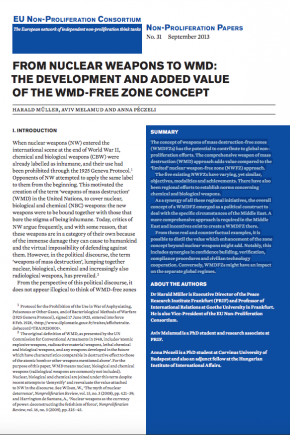From Nuclear Weapons to WMD: The Development and Added Value of the WMD-free Zone Concept
The concept of weapons of mass destruction-free zones (WMDFZs) has the potential to contribute to global nonproliferation efforts. The comprehensive weapon of mass destruction (WMD) approach adds value compared to the ‘limited’ nuclear weapon-free zone (NWFZ) approach. The five existing NWFZs have varying, yet similar, objectives, modalities and achievements. There have also been regional efforts to establish norms concerning chemical and biological weapons. As a synergy of all these regional initiatives, the overall concept of a WMDFZ emerged as a political construct to deal with the specific circumstances of the Middle East. A more comprehensive approach is required in the Middle East and incentives exist to create a WMDFZ there. From these real and counterfactual examples, it is possible to distil the value which enhancement of the zone concept beyond nuclear weapons might add. Notably, this includes synergies in confidence building, verification, compliance procedures and civilian technology cooperation. Conversely, WMDFZs might have an impact on the separate global regimes.

